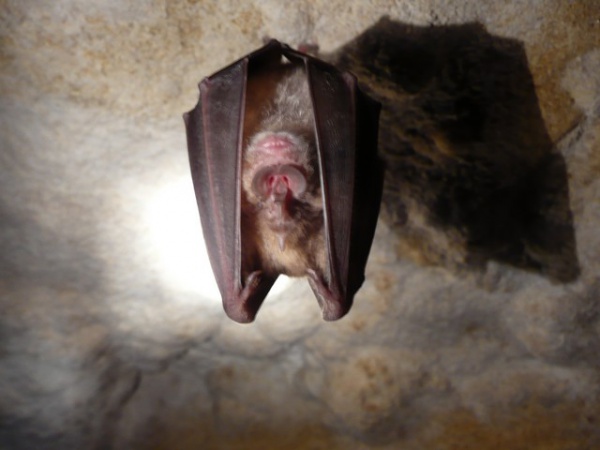Facts About Greater horseshoe bat
The greater horseshoe bat, a member of the genus Rhinolophus, is a fascinating insectivorous bat found across Europe, Northern Africa, Central Asia, and Eastern Asia. It is the largest horseshoe bat in Europe, easily recognized by its distinctive horseshoe-shaped noseleaf.
These bats exhibit impressive travel patterns, often covering distances of up to 30 kilometers between their winter and summer roosts. Remarkably, some individuals have been recorded traveling as far as 180 kilometers. They navigate using echolocation, emitting frequencies between 69–83 kHz, with peak energy at 81 kHz.
Physically, the greater horseshoe bat is notable for its unique noseleaf, and distinctive tooth and bone structure. They measure between 57–71 mm in length, have soft grey-brown fur, and possess a wingspan of 350–400 mm. Weighing up to 30 grams, these bats can live as long as 30 years.
Their range extends from North Africa and southern Europe to East Asia, with the northernmost populations found in Wales. They thrive in diverse environments, including deciduous woodlands, shrublands, and caves. During winter, they hibernate in cold underground sites.
In terms of diet, the greater horseshoe bat primarily consumes moths and beetles, typically foraging within a 4-kilometer radius of their roost. Mating occurs in the fall, and females usually give birth to one offspring each season.
Despite being classified as Least Concern by the IUCN due to their wide distribution, the greater horseshoe bat faces declining populations in various regions. Threats include habitat fragmentation, loss of insects, and disturbances at roosting sites. In the UK, these bats are particularly rare, with numbers dwindling due to agricultural practices and insecticides.
Conservation efforts are crucial to safeguard the greater horseshoe bat and its habitat, especially in areas where their numbers are declining. Key strategies include monitoring roost sites, preserving foraging habitats, and minimizing disturbances. These steps are essential to ensure the survival of this remarkable species.

 Romania
Romania